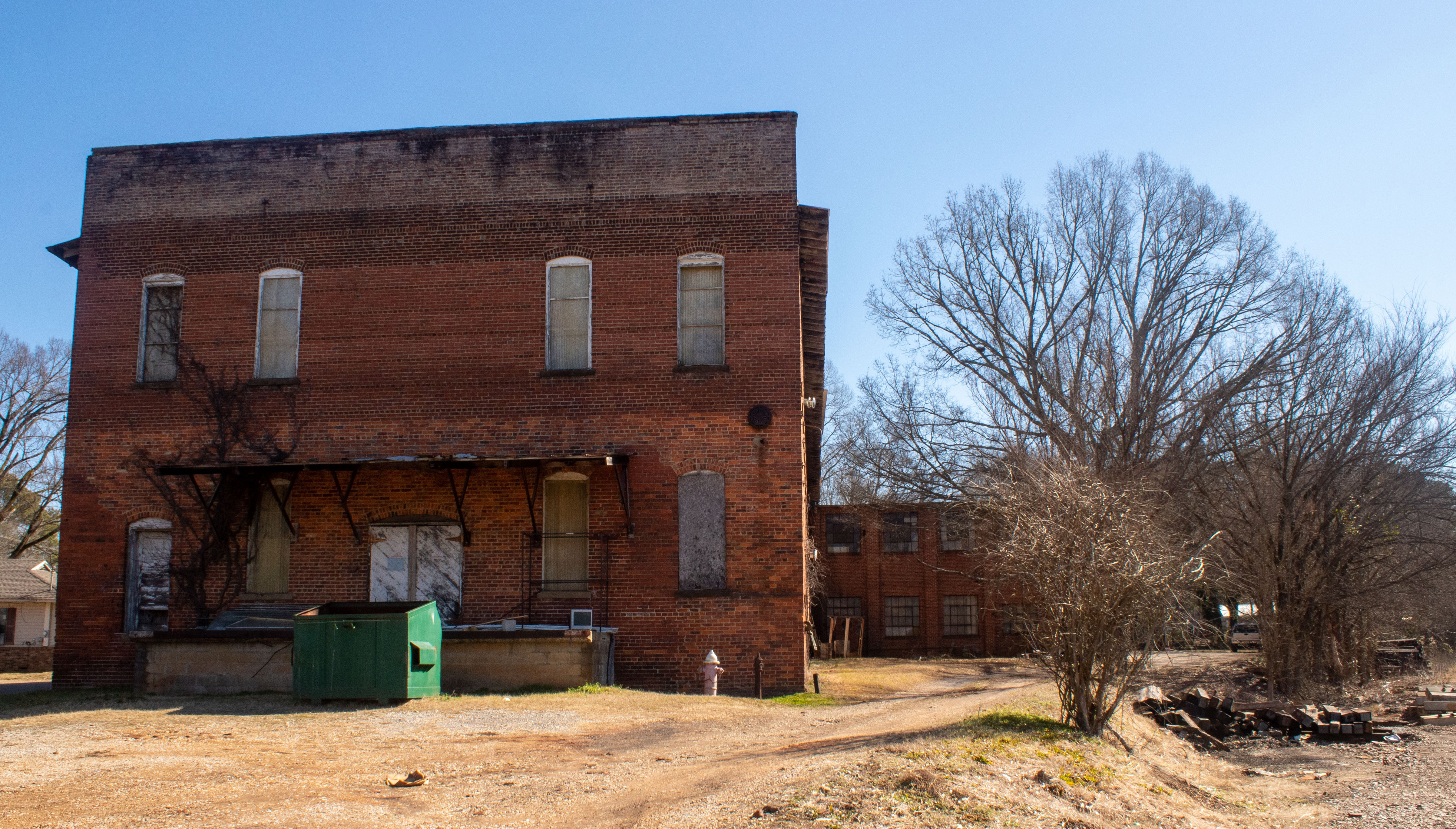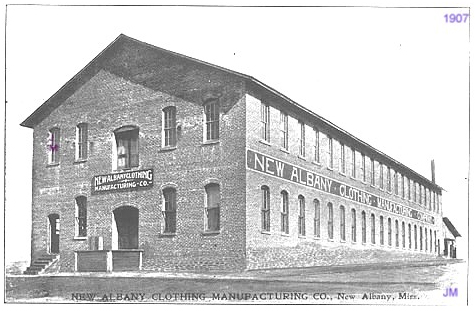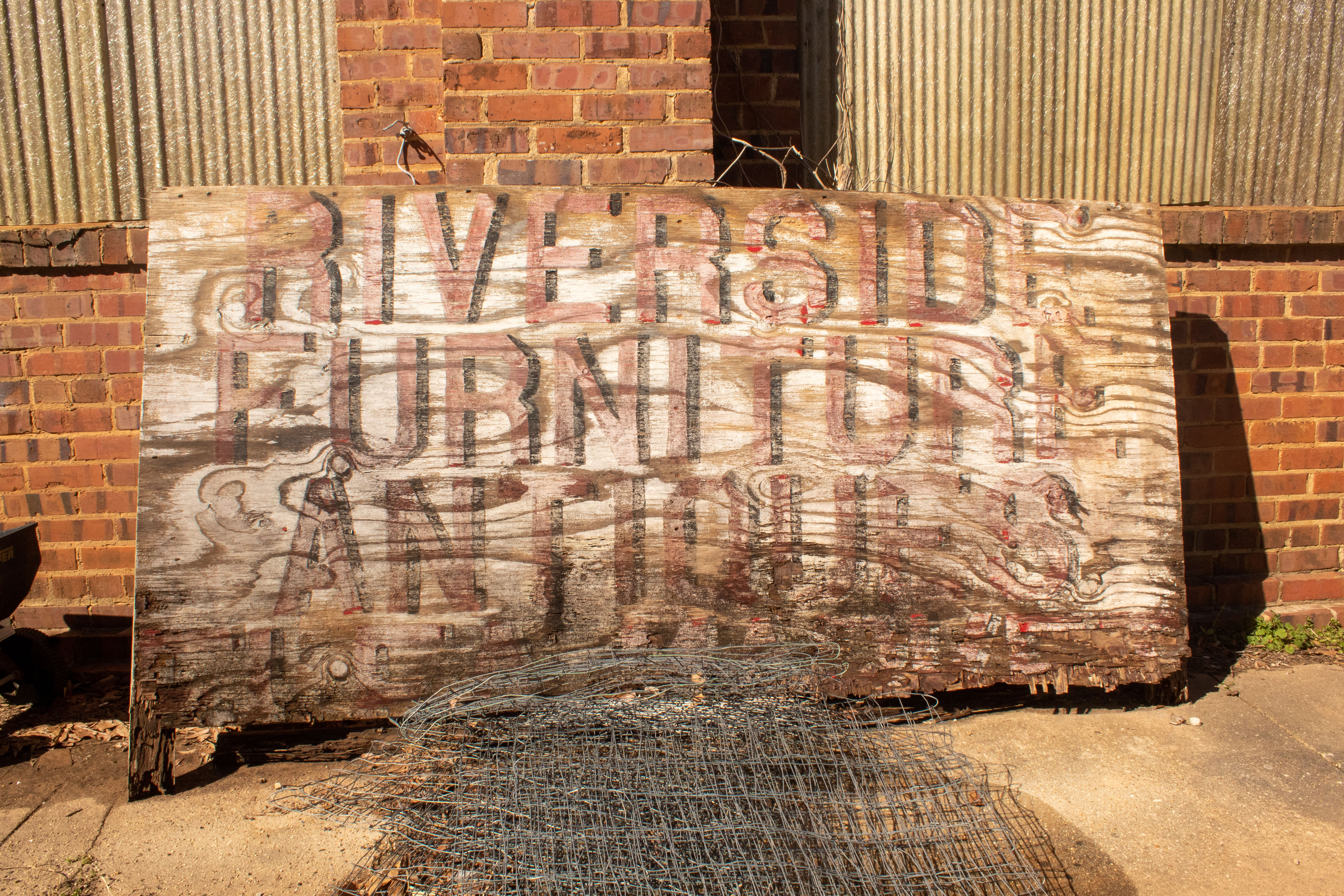
By Hannah Moroney
It is a daunting building. Vines grow on the sides. Dark vines. A black web. The bottom-floor windows are covered, some with wood and others with weathered metal sheets. The old building, with cars coming and going, people in and out, somehow looks inviting.
Inside, the building is not abandoned or daunting. There are chandeliers hung from a wooden beam, little figurines, wicker baskets, shiny vases and fine china. Eyes are welcomed by objects in every direction. Before the old building was covered with treasures from top to bottom, side to side, it was something else.
New Albany's clothing factory
New Albany Clothing Manufacturing Company was the first name of the building. It was built by the legendary millionaire playboy Paul J. Rainey at the beginning of the 19th century. Local legend says that Rainey built the clothing factory to keep himself and his friends clothed during extravagant hunts in Africa and the Arctic. Rainey was an avid hunter and adventurer, and his clothes would become worn and tattered very quickly while hunting lions, bears and other wildlife.
Tupelo Garment Company became associated with the New Albany plant in 1927. There were many clothing factories in several different areas throughout Mississippi owned by Tupelo Garment Company. Mississippi was a major manufacturer of clothing during this time. The building was expanded in 1932. A two-story building was connected to the south end of the factory. The changes that were made to the building so long ago are still visible today.
Six plants run by Tupelo Garment Company were closed and liquidated around 1938, which was the year that Irwin B. Schwabe purchased the New Albany plant. Schwabe was a firm in New York, and one of the largest purchasers of Tupelo Garment products. Business boomed in 1941 when the Irwin B. Schwabe Manufacturing Co. began making uniforms for the soldiers of World War II. According to an article in the Sun Herald, the War
Department contracted Irwin B. Schwabe to manufacture several hundred thousand olive drab flannel shirts. Women sewed, pressed, and packaged uniforms 24 hours a day to supply clothing for the American soldiers.

Memories of long hours
Ricky Cobb, the owner of Riverside Furniture, Antiques and Flea Market, the business that now inhabits the old factory, said that his mother worked for Irwin B. Schwabe Manufacturing Co. during World War II. Cobb said that his mother spent many hours sewing together uniforms, so much so that she was tired of seeing green fabric by the time the war had ended.
Work in the clothing factory was no easy job. Accepting a job in the clothing industry during this time meant demanding work, long hours, and little pay. Most of the employees consisted of women, but some men worked in the factory as well.
Errentine Stephens, a native of New Albany, told a writer in 1988 about the early days of New Albany, and the way that manufacturing and innovation affected the small town.
“Children who once did not have enough clothes to wear to keep them warm, now dressed adequately and often attractively. Children who looked as if they were not eating the right foods began to have good color and sparkling eyes,” Stephens said. “Mothers who can work will provide these things for their children, whether they make a lot or a little.”
Demanding work was common back then. But beauty pageants, not so much. The women of the Irwin B. Schwabe Manufacturing Co. Worked hard,
but had fun as well, by competing in the factory beauty review. The beauty review was complete with contestants, tap dancing routines, choirs, and quartets.
Eventually, the Irwin B. Schwabe Co. was bought by Movie Star Inc. That company was also based in New York, and manufactured loungewear. With the purchase of the Irwin B. Schwabe Co., Movie Star Inc. became one of the largest employers in the state of Mississippi.

The old shirt factory today
Eventually, the New Albany plant was not able to house the bustling businesses that moved in and out of it, and the plant became a storage facility. People may assume time machines are fictional, but a trip into Riverside Furniture, Antiques and Flea Market could change their mind. The building once held dreams -- the dreams of the people who bought it, worked in it, and rode the train past it. The building has lived a long life and seen many people come and go. Now, it is a time capsule for the past.
The time capsule holds vintage picture frames with intricate patterns on their borders. One depicts several young girls dancing around a tall bushel of wheat. A red bicycle hangs from the rafters by a chain, and a wooden weather station clock is fixed to a column. The building holds pieces of large furniture such as curio cabinets, nightstands and dining tables.
Riverside Furniture, Antiques and Flea Market has around 28 vendors that supply an abundance of diverse antiques. The building is mostly original to this day. Customers can easily distinguish between the building that Paul J. Rainey built and the part of the building that was added to keep up with the bustling business inside. Do not let your eyes deceive you as you drive down Highland Street. The old factory with covered windows and vines growing on its side is so much more than an old shirt factory.